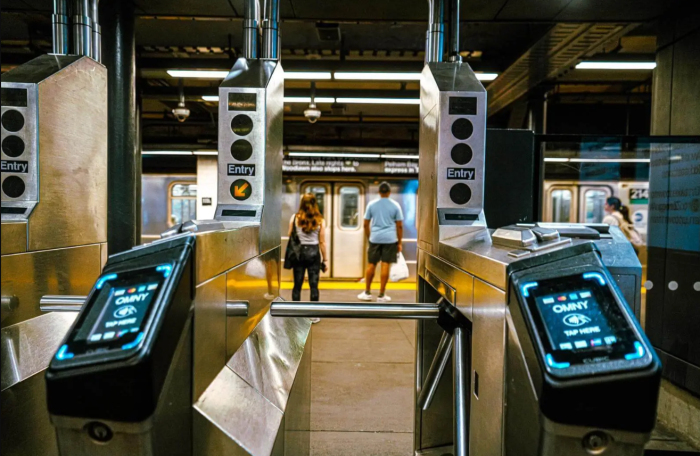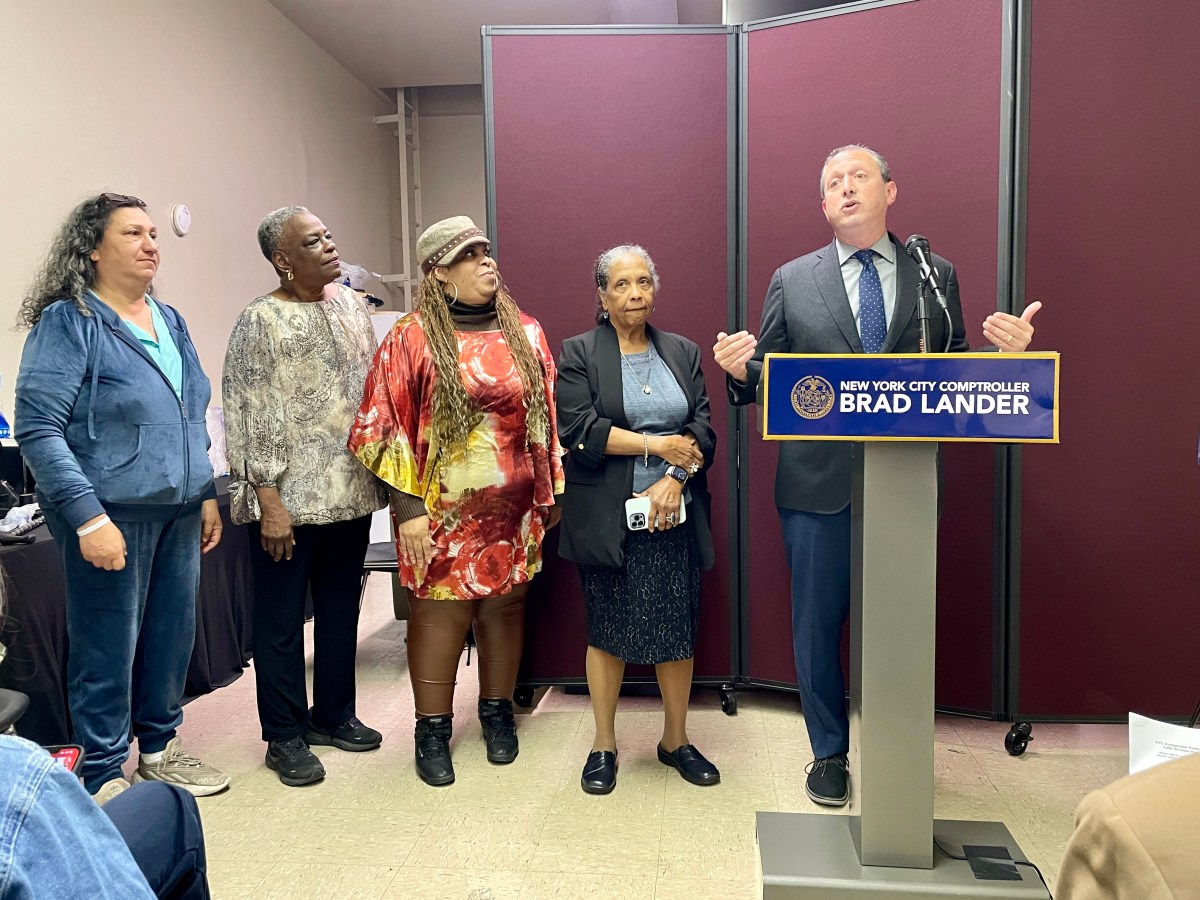
Left turns are one of the most dangerous moves that a driver in New York City can make, according to a new city report.
Drivers turning left accounted for the deaths of 108 pedestrians and cyclists in the city between 2010 and 2014 — three times as many deaths stemming from right-turning vehicles. Last year alone, left turns caused almost 30% of all pedestrian and cyclist injuries. And the elderly are the most vulnerable; the median age of left-turn fatalities was 67.
Those are the findings from “Don’t Cut Corners,” a Department of Transportation report published Wednesday. The report offers a Vision Zero guide to taking an “aggressive approach” to making left turns safer in the city.
“There’s a lot more going on in terms of your cognitive challenges when you’re making left turns,” said Commissioner Polly Trottenberg at a SoHo news conference announcing the findings. “Left turns are just more complicated. All of us know behind the wheel, when you’re taking a left turn, you often have to time yourself to cut in front of moving traffic. Sometimes there are cars behind you honking in that friendly New York City way.”
That’s known as “back pressure,” and it’s one of several reasons why the city believes left turns are so dangerous. On top of juggling oncoming traffic, drivers can take left turns at a wider radius, which translates into higher speeds and increased chances of hitting pedestrians.
Blind spots in cars, created by their “a-pillar,” or the frame of the vehicle that meets the front windshield and driver’s side door, also play a crucial factor in obscuring pedestrians.
Most of these factors are compounded when drivers are turning from minor to major streets — particularly in pedestrian-packed Manhattan and especially where the borough’s narrow crosstown roads connect to major avenues. The wider the thoroughfare, the longer the time a pedestrian is exposed to cars that are turning into multiple lanes.
The key in making left turns safe is limiting that amount of pedestrian exposure to cars. The city believes it can do so through packaging a number of proven planning methods — like Lead Pedestrian Intervals, or LPIs, which give pedestrians more time to cross the street before the light turns green, as well as protected bike lanes — without disrupting the flow of traffic. Many techniques are already in place around New York’s 6,300 miles of streets.
This summer, the department is conducting a left-turn calming pilot of 100 intersections where it will lay out plastic barriers to adjust turning angles, marking turns with guiding radii, rubber curbs and delineators on double yellow lines.
“How much space in the crosswalk is there where the vehicle and pedestrian are conflicting? So, when you give a pedestrian an LPI and the vehicles can’t turn yet — that’s reducing exposure,” said Robert Viola, director of safety policy and research at the department. “Or, if you’re changing the angle of the turn, or limiting the angle of the turn — that’s reducing exposure as well.”
MAKING LEFT TURNS SAFER FOR EVERYONE
Here are a few left-turn calming techniques the city wants to further expand, based on the report:
n LPIs: The city plans to install at least 500 LPIs at crossings in New York City this year. The intervals give pedestrians at least an extra seven seconds of cross time before turning vehicles are given the green light. Between 2003 and 2011, left-turn deaths and serious injuries decreased by 56% at intersections where LPIs were installed.
n Left-turn restrictions and signals: The DOT said it would take “every opportunity” to limit left turns, but noted that it will consider vehicle accessibility issues.
n Protected bike lanes: The DOT is sticking to its commitment to installing 15 miles of protected bike lanes. The department says protected bike lanes have reduced pedestrian and cycling deaths and serious injuries by 63%.
































